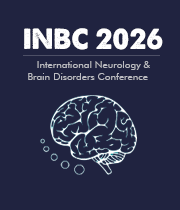Title : Prognostic significance of vascular endothelial growth factor changes in the acute phase of hemorrhagic strokes
Abstract:
Background and Aims: Vascular Endothelial Growth Factor (VEGF) plays a crucial role in the regulation of angiogenesis and neurogenesis, particularly in response to cerebral injury. Experimental studies have demonstrated the presence of VEGF in brain tissue surrounding hemorrhagic sites at the very onset of stroke, suggesting its early involvement in the pathophysiological processes of hemorrhagic stroke (HS). This study aimed to investigate serum VEGF levels during the acute and subacute phases of HS and to evaluate the correlation between VEGF concentration and clinical severity and progression of the disease.
Methods: A total of 65 patients diagnosed with HS of varying localization and volume, due to hypertensive or atherosclerotic causes, were enrolled in the study. Of these, 58.5% (n = 38) were male and 41.5% (n = 27) were female, with a mean age of 64.2 years. The severity of neurological impairment was assessed using the National Institutes of Health Stroke Scale (NIHSS). Serum VEGF levels were measured using enzymelinked immunosorbent assay (ELISA) during the acute phase (within the first 72 hours) and subacute phase (days 7 and 21) of the disease.
Results: The study revealed variable VEGF levels depending on the phase of HS and the clinical condition of the patient. Compared to the control group, patients exhibited significantly elevated VEGF levels in both acute and subacute phases. In the acute phase (1051 pg/ml), higher VEGF levels correlated with greater severity of stroke and more extensive brain edema. This suggests that elevated early VEGF may serve as a marker of severe neurological damage. In contrast, patients with subacute phases (1034 pg/ml) and favourable outcomes demonstrated the highest VEGF levels on days 7 and 21, reflecting its role in repair and neurovascular regeneration. Lower VEGF levels in the subacute phase were associated with poorer prognosis.
Conclusion: VEGF may serve as a valuable prognostic biomarker in HS. Elevated VEGF levels at stroke onset, followed by a decline by day 21, are associated with severe clinical conditions. In contrast, sustained or delayed VEGF elevation may indicate more favorable recovery dynamics.




